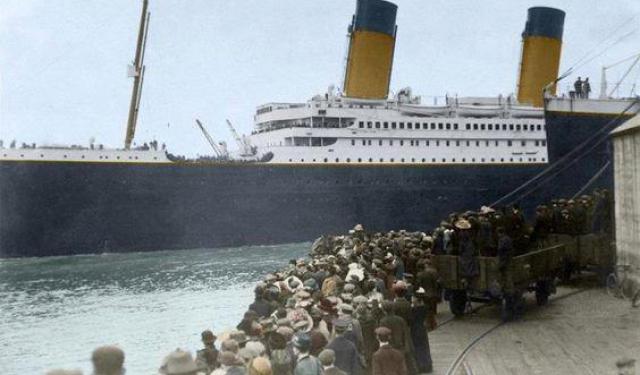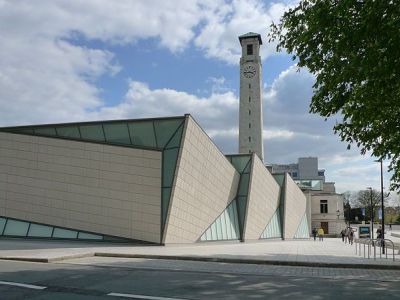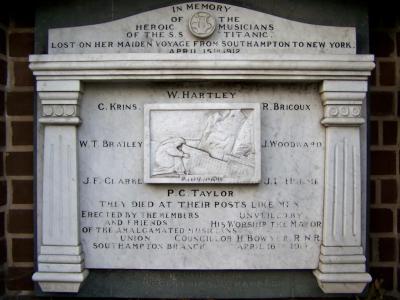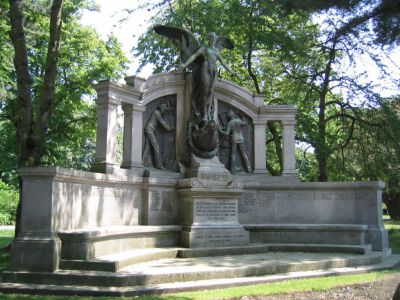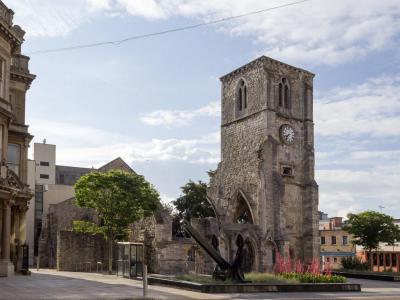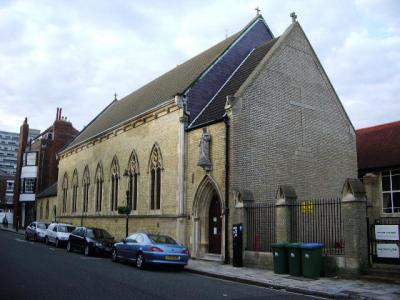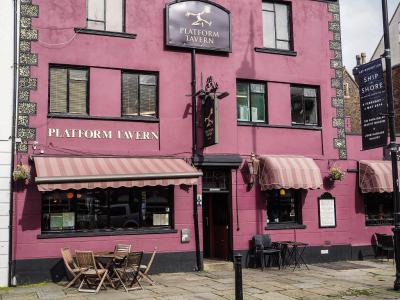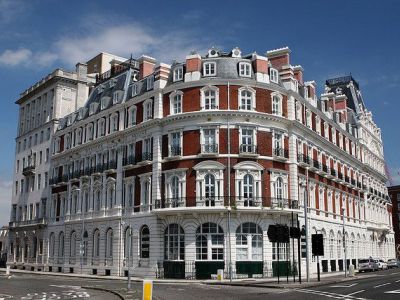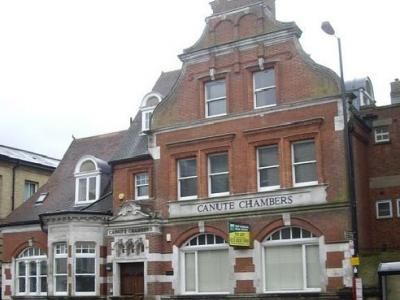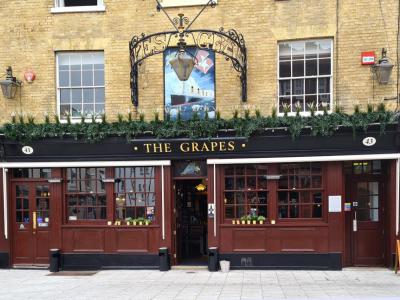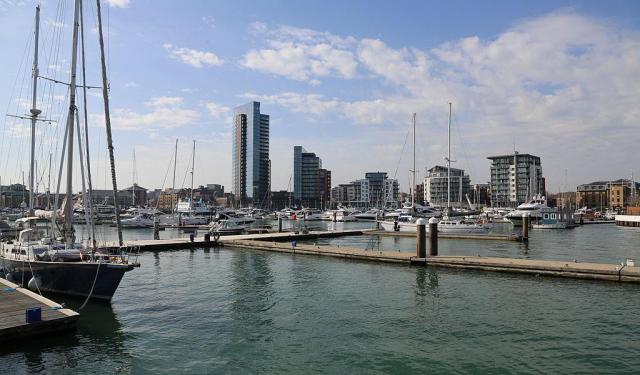Titanic Tour in Southampton (Self Guided), Southampton
Over a hundred years since the sinking of Titanic, the echo of that tragedy still reverberates throughout Southampton. Indeed, nowhere else was the pain of the Titanic disaster, one of the deadliest in maritime history, felt more intensely than here. The majority of Titanic's 900-strong crew were from Southampton, of whom only a handful returned home. More than 500 local households overnight lost a family member – usually a sole breadwinner – as the ill-fated ship hit an iceberg and foundered with 1,500+ people onboard on her maiden voyage from Southampton to New York on April 15th 1912.
A century on, throughout the city there are plenty of individual and group memorials to the victims, as well as buildings intimately linked to the events of April 1912. These include places where crew members and passengers spent their last days prior to the fateful voyage, each of them oblivious to the cruel ending ahead. Among such places are:
The SeaCity Museum – opened in 2012 to mark the centenary of the RMS Titanic's departure from Southampton;
Titanic Musician's and Engineers' Memorials – respectively commemorating those who died in the Titanic disaster;
St. Joseph's Catholic Church – houses the memorial dedicated to the staff of the Ritz, one of the restaurants serving Titanic;
South Western House – in 1912, many first-class passengers stayed here the night before the ship sailed;
Canute Chambers – the former company office of White Star Line, the owner and operator of Titanic;
The Grapes Public House – a pub near Dock Gate 4 where Titanic was moored; many of the crew's firemen and trimmers met here for a final drink before sailing.
To learn more about Titanic and its association with Southampton, embark on this self-guided walking tour.
A century on, throughout the city there are plenty of individual and group memorials to the victims, as well as buildings intimately linked to the events of April 1912. These include places where crew members and passengers spent their last days prior to the fateful voyage, each of them oblivious to the cruel ending ahead. Among such places are:
The SeaCity Museum – opened in 2012 to mark the centenary of the RMS Titanic's departure from Southampton;
Titanic Musician's and Engineers' Memorials – respectively commemorating those who died in the Titanic disaster;
St. Joseph's Catholic Church – houses the memorial dedicated to the staff of the Ritz, one of the restaurants serving Titanic;
South Western House – in 1912, many first-class passengers stayed here the night before the ship sailed;
Canute Chambers – the former company office of White Star Line, the owner and operator of Titanic;
The Grapes Public House – a pub near Dock Gate 4 where Titanic was moored; many of the crew's firemen and trimmers met here for a final drink before sailing.
To learn more about Titanic and its association with Southampton, embark on this self-guided walking tour.
How it works: Download the app "GPSmyCity: Walks in 1K+ Cities" from Apple App Store or Google Play Store to your mobile phone or tablet. The app turns your mobile device into a personal tour guide and its built-in GPS navigation functions guide you from one tour stop to next. The app works offline, so no data plan is needed when traveling abroad.
Titanic Tour in Southampton Map
Guide Name: Titanic Tour in Southampton
Guide Location: England » Southampton (See other walking tours in Southampton)
Guide Type: Self-guided Walking Tour (Sightseeing)
# of Attractions: 9
Tour Duration: 2 Hour(s)
Travel Distance: 3.9 Km or 2.4 Miles
Author: Maia
Sight(s) Featured in This Guide:
Guide Location: England » Southampton (See other walking tours in Southampton)
Guide Type: Self-guided Walking Tour (Sightseeing)
# of Attractions: 9
Tour Duration: 2 Hour(s)
Travel Distance: 3.9 Km or 2.4 Miles
Author: Maia
Sight(s) Featured in This Guide:
- SeaCity Museum
- Titanic Musician's Memorial
- Titanic Engineers' Memorial
- Holyrood Church
- St. Joseph's Catholic Church
- Platform Tavern
- South Western House
- Canute Chambers
- The Grapes Public House
1) SeaCity Museum (must see)
SeaCity Museum opened on April 10, 2012, on the 100th anniversary of the Titanic's departure from Southampton. SeaCity Museum is housed in a building that was previously used as a court and police station.
The museum is home to two permanent exhibitions. One is focused on Southampton's place as a strategic shipping destination. The second permanent exhibition explores Southampton's connection to the RMS Titanic. An additional modern pavilion hosts temporary exhibitions. The Pavillion was newly constructed for the museum and features three interlocking bays which emulate a ship's bow.
The Gateway to the World exhibition focuses on Southampton as a vital shipping hub. The exhibition features a seven-meter-long Queen Mary replica.
Southampton's Titanic Story exhibition views the Titanic tragedy through the eyes of the ship's crew. Most of Titanic's crew listed Southampton as their home address. The exhibition features a courtroom with audiovisual elements to show scenes from the British inquiry into the tragedy.
The exhibition includes audio recordings from Titanic survivors. Interactive displays allow visitors to steer the ship or stoke its engines.
When visitors enter the exhibition, they are guided to view the civic center clock tower through a roof light. This clock tower is the approximate height of one of Titanic's four funnels and gives visitors a feeling for the massive scale of the doomed ship.
The museum is home to two permanent exhibitions. One is focused on Southampton's place as a strategic shipping destination. The second permanent exhibition explores Southampton's connection to the RMS Titanic. An additional modern pavilion hosts temporary exhibitions. The Pavillion was newly constructed for the museum and features three interlocking bays which emulate a ship's bow.
The Gateway to the World exhibition focuses on Southampton as a vital shipping hub. The exhibition features a seven-meter-long Queen Mary replica.
Southampton's Titanic Story exhibition views the Titanic tragedy through the eyes of the ship's crew. Most of Titanic's crew listed Southampton as their home address. The exhibition features a courtroom with audiovisual elements to show scenes from the British inquiry into the tragedy.
The exhibition includes audio recordings from Titanic survivors. Interactive displays allow visitors to steer the ship or stoke its engines.
When visitors enter the exhibition, they are guided to view the civic center clock tower through a roof light. This clock tower is the approximate height of one of Titanic's four funnels and gives visitors a feeling for the massive scale of the doomed ship.
2) Titanic Musician's Memorial
The Titanic Musicians' Memorial in Southampton stands as a tribute to the eight musicians who tragically lost their lives during the RMS Titanic disaster on April 15, 1912. The original memorial, unveiled by the Mayor of Southampton in 1913, was housed in the old Southampton library but was destroyed during a World War II bombing. In 1990, a replica was created by W. Cornish of Woolston and installed at the original site, located at the corner of Cumberland Place and London Road, next to the offices of Paris Smith solicitors. The unveiling was marked by the presence of Titanic survivors Edith Haisman, Millvina Dean, Bertram Dean, and Eva Hart.
The memorial features a poignant design, including a musical inscription of the opening bars of the hymn "Nearer, My God, to Thee," a song closely associated with the Titanic’s final moments. The plaque also includes carvings of a grieving woman and an iceberg, as well as the names of the musicians, led by bandmaster Wallace Hartley, who continued to play as the ship sank, providing comfort to passengers in the chaos. Despite debate about the band’s final song, "Nearer, My God, to Thee" has become the widely accepted choice.
The memorial honors Wallace Hartley (violin), Roger Marie Bricoux (cello), Theodore Ronald Brailey (piano), John Wesley Woodward (cello), John Frederick Preston Clarke (string bass, viola), John Law Hume (violin), Percy Cornelius Taylor (piano), and Georges Alexandré Krins (violin). Their courage and dedication to their craft, even in the face of death, remain an enduring symbol of human dignity.
The memorial features a poignant design, including a musical inscription of the opening bars of the hymn "Nearer, My God, to Thee," a song closely associated with the Titanic’s final moments. The plaque also includes carvings of a grieving woman and an iceberg, as well as the names of the musicians, led by bandmaster Wallace Hartley, who continued to play as the ship sank, providing comfort to passengers in the chaos. Despite debate about the band’s final song, "Nearer, My God, to Thee" has become the widely accepted choice.
The memorial honors Wallace Hartley (violin), Roger Marie Bricoux (cello), Theodore Ronald Brailey (piano), John Wesley Woodward (cello), John Frederick Preston Clarke (string bass, viola), John Law Hume (violin), Percy Cornelius Taylor (piano), and Georges Alexandré Krins (violin). Their courage and dedication to their craft, even in the face of death, remain an enduring symbol of human dignity.
3) Titanic Engineers' Memorial (must see)
The Titanic Engineers' Memorial, located in East (Andrews) Park, Southampton, is a tribute to the heroic engineers who perished in the tragic sinking of the RMS Titanic on 15 April 1912. Unveiled on 22 April 1914 by Sir Archibald Denny, president of the Institute of Marine Engineers, the memorial was attended by a crowd of approximately 100,000 Southampton residents, reflecting the profound impact of the disaster on the local community.
The memorial, made of bronze and Kemnay granite, was funded by global donations and created by Whitehead and Son of Kennington Oval, London. Sculptor Ferdinand Victor Blundstone oversaw the design, while the striking bronze statue of Nike, the Greek Winged Goddess of Victory, was crafted by Trieste-born artist Romeo Rathmann. The memorial honors Joseph Bell, the Chief Engineer Officer of the Titanic, and his 24 engineers, 6 electrical engineers, 2 boilermakers, a plumber, and a clerk, all of whom died performing their duties as the ship sank.
The statue serves as a poignant reminder of the bravery of these men, who, as Sir Archibald Denny noted during the unveiling, continued their work to the end, knowing their efforts could only delay the inevitable. None survived the disaster, but their legacy endures through this Grade II listed monument, which was restored in 2010 through a collaboration between Southampton City Council and the TV production company Twenty Twenty Television.
Located near the Titanic Engineers' Memorial is the Titanic Musicians' Memorial, commemorating Wallace Hartley and the musicians who famously played as the ship went down, further cementing Southampton's connection to the Titanic tragedy.
The memorial, made of bronze and Kemnay granite, was funded by global donations and created by Whitehead and Son of Kennington Oval, London. Sculptor Ferdinand Victor Blundstone oversaw the design, while the striking bronze statue of Nike, the Greek Winged Goddess of Victory, was crafted by Trieste-born artist Romeo Rathmann. The memorial honors Joseph Bell, the Chief Engineer Officer of the Titanic, and his 24 engineers, 6 electrical engineers, 2 boilermakers, a plumber, and a clerk, all of whom died performing their duties as the ship sank.
The statue serves as a poignant reminder of the bravery of these men, who, as Sir Archibald Denny noted during the unveiling, continued their work to the end, knowing their efforts could only delay the inevitable. None survived the disaster, but their legacy endures through this Grade II listed monument, which was restored in 2010 through a collaboration between Southampton City Council and the TV production company Twenty Twenty Television.
Located near the Titanic Engineers' Memorial is the Titanic Musicians' Memorial, commemorating Wallace Hartley and the musicians who famously played as the ship went down, further cementing Southampton's connection to the Titanic tragedy.
4) Holyrood Church
Holyrood Church, originally one of the five churches serving the old walled town of Southampton, dates back to 1320. Though heavily damaged by Nazi bombing during the Blitz in November 1940, its remnants remain a poignant memorial to the sailors of the Merchant Navy, officially dedicated in 1957.
The church's history stretches back even further, with the first documentary evidence dating from 1160 when Henry II granted it, along with other chapels, to the monks of Saint Denys. Its name, "Holy Rood," hints at Saxon origins.
Following the destruction during World War II, only the tower in the southwest corner, the eastern chancel, and significant portions of the north walls remain intact. The church's wooden spire and grand west window were lost, and much of the central structure was destroyed. On the west face of the surviving tower, a plaque honors Charles Dibdin, a Southampton-born poet, dramatist, and composer famed for his sea songs like "Tom Bowling" and "Poor Jack." Above this plaque are the clock and bells, which feature pre-1760 Quarter Jacks-small figures that strike each quarter-hour.
Inside the church, a memorial fountain, erected in 1912–1913 under the tower, pays tribute to those who perished in the sinking of the RMS Titanic. The fountain rests on four stone columns, with carvings of the Titanic adorning a curved pediment, all beneath a four-columned cupola.
Holyrood Church, though a shell of its former self, stands as a moving testament to both its ancient past and more recent history.
The church's history stretches back even further, with the first documentary evidence dating from 1160 when Henry II granted it, along with other chapels, to the monks of Saint Denys. Its name, "Holy Rood," hints at Saxon origins.
Following the destruction during World War II, only the tower in the southwest corner, the eastern chancel, and significant portions of the north walls remain intact. The church's wooden spire and grand west window were lost, and much of the central structure was destroyed. On the west face of the surviving tower, a plaque honors Charles Dibdin, a Southampton-born poet, dramatist, and composer famed for his sea songs like "Tom Bowling" and "Poor Jack." Above this plaque are the clock and bells, which feature pre-1760 Quarter Jacks-small figures that strike each quarter-hour.
Inside the church, a memorial fountain, erected in 1912–1913 under the tower, pays tribute to those who perished in the sinking of the RMS Titanic. The fountain rests on four stone columns, with carvings of the Titanic adorning a curved pediment, all beneath a four-columned cupola.
Holyrood Church, though a shell of its former self, stands as a moving testament to both its ancient past and more recent history.
5) St. Joseph's Catholic Church
Saint Joseph's Catholic Church in Southampton, built in 1843, is a significant landmark in the city's religious and maritime history. Located on Bugle Street near Town Quay, this Grade II listed building was the first Catholic church in Southampton after the Reformation and was designed by the renowned architect Augustus Pugin. Though originally planned to reflect Pugin’s full vision, financial constraints led to a blend of designs, with local architect J.G. Poole completing the nave. The church served as the pro-cathedral for the Diocese of Portsmouth until 1882.
Saint Joseph's also holds a unique place in the city's maritime legacy, once providing shelter to sailors and their families through the Stella Maris Club. The church is a popular stop for those following Southampton’s Titanic Trail, offering a memorial dedicated to the staff of the Ritz restaurant aboard the ill-fated ship.
Over the years, the church has undergone significant renovations, including a height increase and the addition of a seventh window during an 1888 expansion led by architect Leonard Stokes. Pugin’s original altar, moved in the early 20th century, was restored to its original position in 1971.
Today, Saint Joseph’s remains an active parish, merged in 2006 with Saint Edmund’s to form the Parish of Saint Joseph and Saint Edmund. It continues to serve the community, hosting events at the attached Stella Maris Pastoral Centre, which links the Catholic Saint Joseph’s and the Anglican Saint Michael’s Church next door.
Saint Joseph's also holds a unique place in the city's maritime legacy, once providing shelter to sailors and their families through the Stella Maris Club. The church is a popular stop for those following Southampton’s Titanic Trail, offering a memorial dedicated to the staff of the Ritz restaurant aboard the ill-fated ship.
Over the years, the church has undergone significant renovations, including a height increase and the addition of a seventh window during an 1888 expansion led by architect Leonard Stokes. Pugin’s original altar, moved in the early 20th century, was restored to its original position in 1971.
Today, Saint Joseph’s remains an active parish, merged in 2006 with Saint Edmund’s to form the Parish of Saint Joseph and Saint Edmund. It continues to serve the community, hosting events at the attached Stella Maris Pastoral Centre, which links the Catholic Saint Joseph’s and the Anglican Saint Michael’s Church next door.
6) Platform Tavern
The Platform Tavern is the epitome of a British public house. The walls are steeped in history, the atmosphere is homely and unique, and the menu is reliable and delicious.
The pub is built against the 1350 city walls. In this area, the quay contained a gun battery.
The Platform Tavern has occupied this space since 1873. Like many pubs near seaports, the Platform brewed their own ale for the seamen who came to the docks. They also had rooms to rent upstairs.
When Titanic was docked here, the pub would've had a front-row seat. Many passengers passed through. The last victim to be recovered, one Mr. James McGrady, stayed in the pub. In fact, it was his last known address.
The pub was also featured in James Cameron's movie. Here, fictional characters Jack Dawson and Fabrizio De Rossi won their tickets to America in a poker game.
The pub is built against the 1350 city walls. In this area, the quay contained a gun battery.
The Platform Tavern has occupied this space since 1873. Like many pubs near seaports, the Platform brewed their own ale for the seamen who came to the docks. They also had rooms to rent upstairs.
When Titanic was docked here, the pub would've had a front-row seat. Many passengers passed through. The last victim to be recovered, one Mr. James McGrady, stayed in the pub. In fact, it was his last known address.
The pub was also featured in James Cameron's movie. Here, fictional characters Jack Dawson and Fabrizio De Rossi won their tickets to America in a poker game.
7) South Western House
South Western House, originally opened as the Imperial Hotel in 1865, stands as a key landmark in Southampton, reflecting both historical grandeur and modern luxury. Designed by John Norton in the French Renaissance style, the building once earned the moniker “The Ritz of Southampton.” It catered to an elite clientele, including Titanic's first-class passengers, who stayed there the night before embarking on their ill-fated voyage in 1912.
The hotel’s architecture, with its marble walls, grand staircase, and ceiling murals, encapsulated the opulence of the late 19th and early 20th centuries. It served as a hub for the rich and famous, hosting figures like Winston Churchill and Dwight Eisenhower, who used the venue to plan the D-Day invasion during World War II. Hollywood icons such as Laurel and Hardy, Charlie Chaplin, and Amelia Earhart also walked its halls, adding to its illustrious history.
Although the Second World War saw the building taken over by the Royal Navy as HMS Shrapnel, the South Western House continued to evolve. Its rich history has been preserved through its Grade II listing, and the building has been carefully redeveloped into luxury apartments and penthouses. The ground floor maintains its connection to the past, with features like the original marble pillars still intact, reminding visitors of its former grandeur.
Today, South Western House blends its historic charm with modern amenities, offering a glimpse into Southampton’s luxurious past while continuing to be a vibrant part of the city.
The hotel’s architecture, with its marble walls, grand staircase, and ceiling murals, encapsulated the opulence of the late 19th and early 20th centuries. It served as a hub for the rich and famous, hosting figures like Winston Churchill and Dwight Eisenhower, who used the venue to plan the D-Day invasion during World War II. Hollywood icons such as Laurel and Hardy, Charlie Chaplin, and Amelia Earhart also walked its halls, adding to its illustrious history.
Although the Second World War saw the building taken over by the Royal Navy as HMS Shrapnel, the South Western House continued to evolve. Its rich history has been preserved through its Grade II listing, and the building has been carefully redeveloped into luxury apartments and penthouses. The ground floor maintains its connection to the past, with features like the original marble pillars still intact, reminding visitors of its former grandeur.
Today, South Western House blends its historic charm with modern amenities, offering a glimpse into Southampton’s luxurious past while continuing to be a vibrant part of the city.
8) Canute Chambers
Canute Chambers is a red brick building at the end of Canute Road. It's near the Souther Western Hotel and close to Dock Gate 4, where the White Star Line steamers tied up.
Most importantly, though, Canute Chambers was the Southampton company office for White Star Line. The company was based in Liverpool and was the owner and operator of the Titanic.
In this building, passengers could buy tickets and get information. Having a base and office in Southampton reduced customer travel time from London. It also provided the company an option to stop at Cherbourg, France, to pick up more passengers on the way to America.
The building was built in 1893 for the American Line, but White Star took over in 1907. White Star moved out in 1931, and the United States Line took over the building until 1969. Today it is still used as offices but no longer for shipping lines.
The White Star line was an immensely successful operator of several royal mail steamers (RMS) ships. The company was started in 1850 for service to Australia but was retooled in the 1890s to compete with Cunard Line's North Atlantic service. At its height, it was one of the most well-regarded shipping lines in the world.
The company is remembered for their innovative ship designs, including the RMS Oceanic and the three Olympic-class ships, Olympic, Britannic, and Titanic.
White Star's fortunes declined during the Great Depression, and it eventually merged with Cunard Line.
Most importantly, though, Canute Chambers was the Southampton company office for White Star Line. The company was based in Liverpool and was the owner and operator of the Titanic.
In this building, passengers could buy tickets and get information. Having a base and office in Southampton reduced customer travel time from London. It also provided the company an option to stop at Cherbourg, France, to pick up more passengers on the way to America.
The building was built in 1893 for the American Line, but White Star took over in 1907. White Star moved out in 1931, and the United States Line took over the building until 1969. Today it is still used as offices but no longer for shipping lines.
The White Star line was an immensely successful operator of several royal mail steamers (RMS) ships. The company was started in 1850 for service to Australia but was retooled in the 1890s to compete with Cunard Line's North Atlantic service. At its height, it was one of the most well-regarded shipping lines in the world.
The company is remembered for their innovative ship designs, including the RMS Oceanic and the three Olympic-class ships, Olympic, Britannic, and Titanic.
White Star's fortunes declined during the Great Depression, and it eventually merged with Cunard Line.
9) The Grapes Public House
The Grapes was a pub near Dock Gate 4 where Titanic was moored. It's located on Oxford Street in the Hampshire part of town.
It was often the tradition for many of the ship's crew members to meet for one last drink ashore before they sailed. Many of Titanic's firemen and trimmers made arrangements to meet at The Grapes.
Today a mural and memorial to the ill-fated ocean liner are displayed on the pub's wall over its entrance. The pub is also decorated with plenty of memorabilia and pictures relating to the ship, the crew, and the tragedy.
The Grapes' building was built in the early 19th century. The building extends over three stories. It features a pool room, live music, and a bar with national and regional ales. While the pub embraces its historical connection to seafarers, today, the operation has a "modern cosmopolitan feel."
It was often the tradition for many of the ship's crew members to meet for one last drink ashore before they sailed. Many of Titanic's firemen and trimmers made arrangements to meet at The Grapes.
Today a mural and memorial to the ill-fated ocean liner are displayed on the pub's wall over its entrance. The pub is also decorated with plenty of memorabilia and pictures relating to the ship, the crew, and the tragedy.
The Grapes' building was built in the early 19th century. The building extends over three stories. It features a pool room, live music, and a bar with national and regional ales. While the pub embraces its historical connection to seafarers, today, the operation has a "modern cosmopolitan feel."
Walking Tours in Southampton, England
Create Your Own Walk in Southampton
Creating your own self-guided walk in Southampton is easy and fun. Choose the city attractions that you want to see and a walk route map will be created just for you. You can even set your hotel as the start point of the walk.
Southampton Old Town Walking Tour
Southampton is a bustling coastal city with the history going back all the way to the Stone Age. There are over 90 listed buildings and 30 ancient monuments in the Old Town, including medieval watch towers and dungeons, an array of churches, fine timber-framed Tudor houses, inns and hole-in-the-wall pubs. Despite heavy bombardment during WWII, much of Southampton's historic heritage survived... view more
Tour Duration: 2 Hour(s)
Travel Distance: 1.9 Km or 1.2 Miles
Tour Duration: 2 Hour(s)
Travel Distance: 1.9 Km or 1.2 Miles
Southampton Waterfront Walk
A major seaport on the south coast of England, the city of Southampton abounds in attractions of various sorts. Southampton Waterfront, in particular, holds significant historical and cultural value, offering ample opportunities for sightseeing, shopping, dining, recreation, and entertainment.
At the heart of this vibrant area is the Pilgrims Fathers Memorial, commemorating the departure of... view more
Tour Duration: 1 Hour(s)
Travel Distance: 2.1 Km or 1.3 Miles
At the heart of this vibrant area is the Pilgrims Fathers Memorial, commemorating the departure of... view more
Tour Duration: 1 Hour(s)
Travel Distance: 2.1 Km or 1.3 Miles
Southampton Introduction Walking Tour
Southampton is an important port city with a long history. Archaeological records indicate that the area has been settled since the Stone Age. The Romans had a settlement here, and the Anglo-Saxons later settled in the area.
Southampton became a major port after the 1066 Norman Conquest. Southampton's impressive walls were built following a French incursion in the 1300s.
The Mayflower... view more
Tour Duration: 2 Hour(s)
Travel Distance: 3.3 Km or 2.1 Miles
Southampton became a major port after the 1066 Norman Conquest. Southampton's impressive walls were built following a French incursion in the 1300s.
The Mayflower... view more
Tour Duration: 2 Hour(s)
Travel Distance: 3.3 Km or 2.1 Miles
The Most Popular Cities
/ view all
